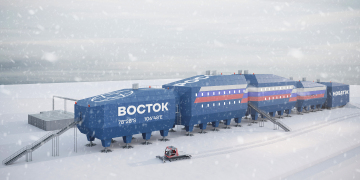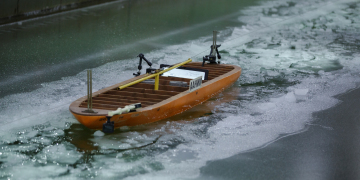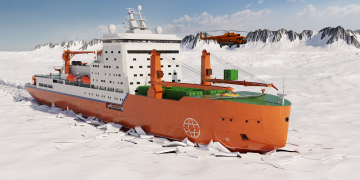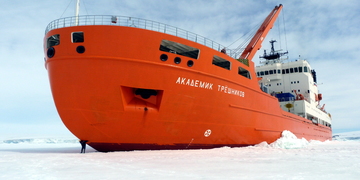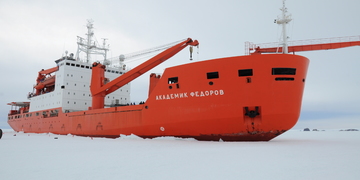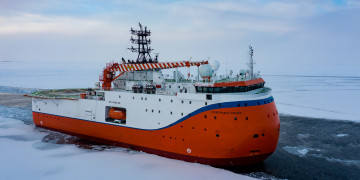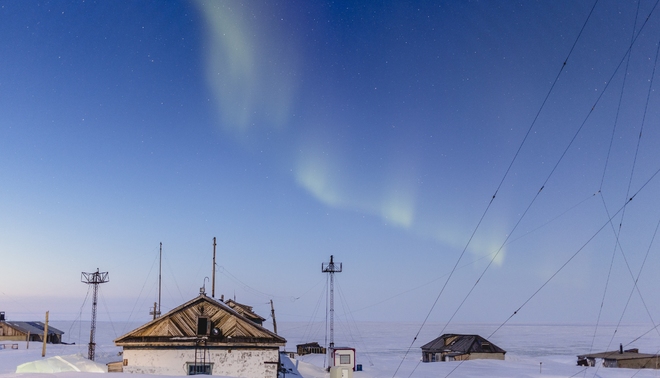Information

High-latitude Arctic Expedition (HLAE) is the AARI operational and logistics department. HLAE is the successor to the Department of Scientific Expeditions and to the High-Latitude Air Expedition “Sever”.
In connection with the development of navigation and active mining in the Arctic, the issue of continuous hydrometeorological monitoring and ecological assessment of the fragile Arctic environment has become pressing.
ACTIVITIES
The main scientific and practical tasks of the HLAE include carrying out scientific research aimed at solving issues related to hydrometeorological support of economic activities in the Arctic region, studying regional and global climate changes and monitoring environmental pollution, as well as:
- organizing aviation expeditions, complex scientific expeditions and supply operations on drifting ice, sea vessels and icebreakers;
- maintaining hydrometeorological observations in the Arctic by means of automatic weather stations and drifting buoys in remote areas of the Arctic Ocean and on high-latitude islands of the Arctic region;
- testing new technologies and equipment, introducing expeditionary research work into practice;
- using unmanned aircraft in the Arctic;
- testing and implementing new technologies for operational work, research and communications in the Arctic region;
- logistics support for expeditionary scientific programs carried out by organizations of various ministries and departments;
- carrying out an extensive range of scientific observations, monitoring and research activities at research bases and stations in the Arctic.
OBSERVATORIES
Roshydromet has about a hundred observatory stations in the Arctic, supplying the data for weather forecasts. AARI specialists work at three observatories: the scientific center in Barentsburg on the Spitsbergen archipelago, Slavbard (RAE-S - Russian Arctic Expedition on the Spitsbergen Archipelago), the research station “Ice Base Cape Baranova” on the Severnaya Zemlya archipelago and the hydrometeorological observatory in Tiksi, belonging to the Yakutsk Department of Roshydromet. In addition to carrying out scientific observations and monitoring, the observatories are engaged in fundamental research covering all environmental spheres.
In 2009-2015, the geophysical monitoring network was reconstructed, the polar stations have been equipped with modern digital equipment, and satellite communication systems have been installed.
DRIFTING STATIONS
- The world's first drifting station "Severny Polyus" (North Pole) was launched on May 21, 1937. The official flag-raising ceremony took place on June 6, 1937, 20 km from the North Pole. The expedition lasted nine months, the ice floe covered more than 2000 km. Icebreakers "Taimyr" and "Murman" picked up four wintering expedition members on February 19, 1938, beyond latitude 70°N, several tens of kilometers from the coast of Greenland.
- "Severny Polyus -2" is the second Soviet drifting research station - 04.2.1950-04.11.1951.
- "Severny Polyus -3" – 04.9.1954-04.20.1955.
- Since then, two or three drifting stations simultaneously have been continuously operating on the ice of the Arctic basin (the Arctic Ocean).
- The last Soviet drifting station, Severny Polyus -31, completed its work on June 25, 1991.
On April 25, 2003, with the opening of Severny Polyus -32, the Severny Polyus drifting research station program was resumed. - The last Russian drifting research station, Severny Polyus -40, began its operation on October 1, 2012 at 85.2° N, 142.8° W. The main task of the station was to continue monitoring the natural environment state in the high latitudes of the Arctic basin. In mid-May 2013, due to anomalous ice processes in the Arctic Ocean, the base ice floe was split into several fragments, and on June 12, 2013, expedition members were evacuated on the nuclear-powered icebreaker “Yamal”, as part of the Arctic-2013 expedition. During the operation period of Severny Polyus -40, the total drift of the station was 1673 km, the general drift was 375 km along the 147° meridian east.
PHOTOS
| By Nikita Kuznetsov, Alexander Nikolaev |
STATIONS
-
Ice Base Cape Baranova
-
Tiksi Hydrometeorological Observatory
-
Khastir base
